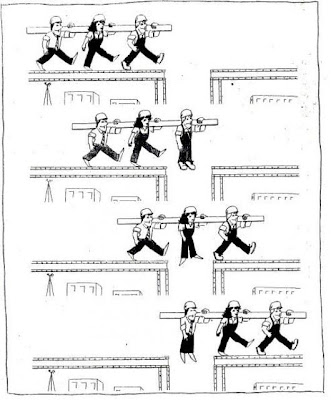1G - The first generation (1G) began in the early 80s was analog, circuit switched, and it only carried voice traffic. The analog phones used in 1G were less secure and prone to interference where the signal is weak. Analog systems include Advanced Mobile Phone Service (AMPS), NMT and ETACS cellular networks.
Disadvantage and reason for move into digital systems:
Only one subscriber at any given time is assigned to a channel.
2G - The second generation (2G) emerged in the 90s when mobile operators deployed two completing digital voice standards. [GSM and CDMA]
2G technology – Voice and SMS (sent through control channels meant for communication between tower and handset). Greater throughput is achieved through digital techniques such as compression and modulation.
The 2G phones cover all speech into digital code, resulting in a clear signal that can be encrypted for security. Most also include some kind of messaging, as well as support for Centrex style services such as voice mail and caller ID. The most popular is GSM (Global System for Mobile Communications), but several others are used around the world. They can send data, but usually at less than 10 kilobits per second (Kbps); by comparisons, most modems achieve a real speed of atleast 30 Kbps. 2G networks include GSM, D-AMPS (TDMA) and CDMA. 2G networks can support SMS applications.
2.5G - The successor of the 2G technology is the 2.5G. 2.5 G supports higher data speeds. The term 2.5G also applies to technology such as WAP (Wireless Application Protocol), which uses a version of the web to fit into a mobile phone’s slow data rate and small screen. 2.5G networks include EDGE (Enhanced Data Rates) and GPRS (General Packet Radio Service). These networks support WAP, MMS, SMS mobile games, and search and directory.Through 2.5G and 2.75G operators tried to introduce data services
In GSM – GPRS (peak rate is 114 kbps) and EDGE [Enhanced Data rates for GSM Evolution] (peak rate is 384kbps) are available.
In CDMA – 1xRTT (peak rate 144 kbps) If you use more voice, you get less data.
Though MMS was introduced in the 2.5G, it really gained its momentum and fame only with the introduction of 3G.
3G - The present hype is around the Third Generation (3G) phones, which is expected to play a very important role until atleast 2010. 3G systems will provide a variety of advanced services, including data transfer at upto 2 megabits per second (Mbps). 3G will support multimedia applications such as full-motion video, video conferencing and Internet access. 3G will cover bot only the connection between a mobile terminal and its base station, called the WAN (Wireless Area Network), but also the LAN (Local Area Network). 3G is a generic term covering a range of future wireless network technologies, including WCDMA (Wideband Code Division Multiple Access), CDMA2000 (Code Division Multiple Access), UMTS (Universal Mobile Telecommunications Service) and EDGE.
3G – 5MHz multi-carrier system is used in 3G so that voice and data can be accommodated in the same channel. Data transfer rates can go up to several Mbps.
4G - Fourth Generation networks are already in the labs, targeted for deployment beginning in 2010. They will provide data rates up to 100 Mbps, enough for telepresence. This is a type of virtual reality, defined as full stimulation of all senses required to provide the illusion of actually being somewhere else – an illusion that cannot be distinguished from the real thing.
